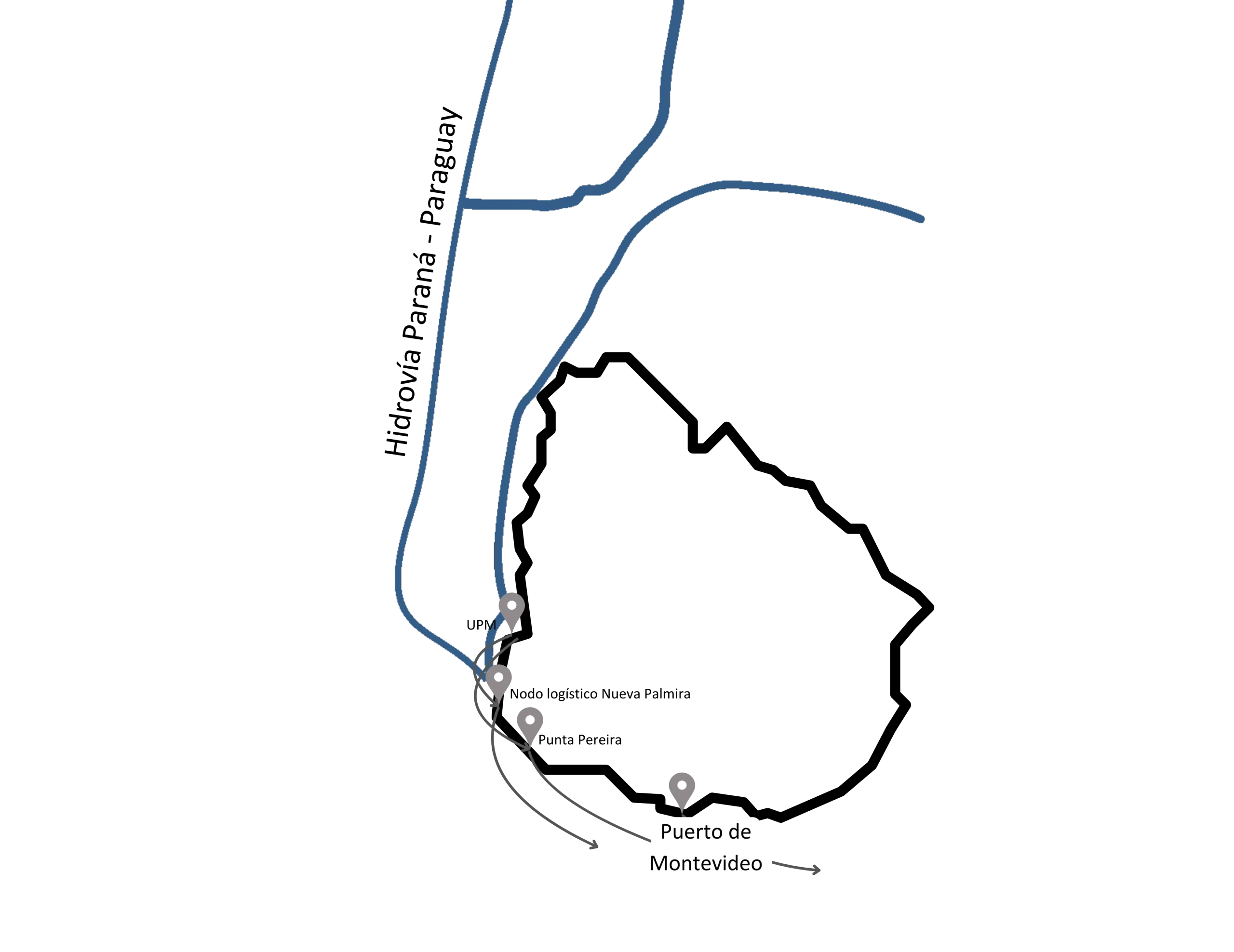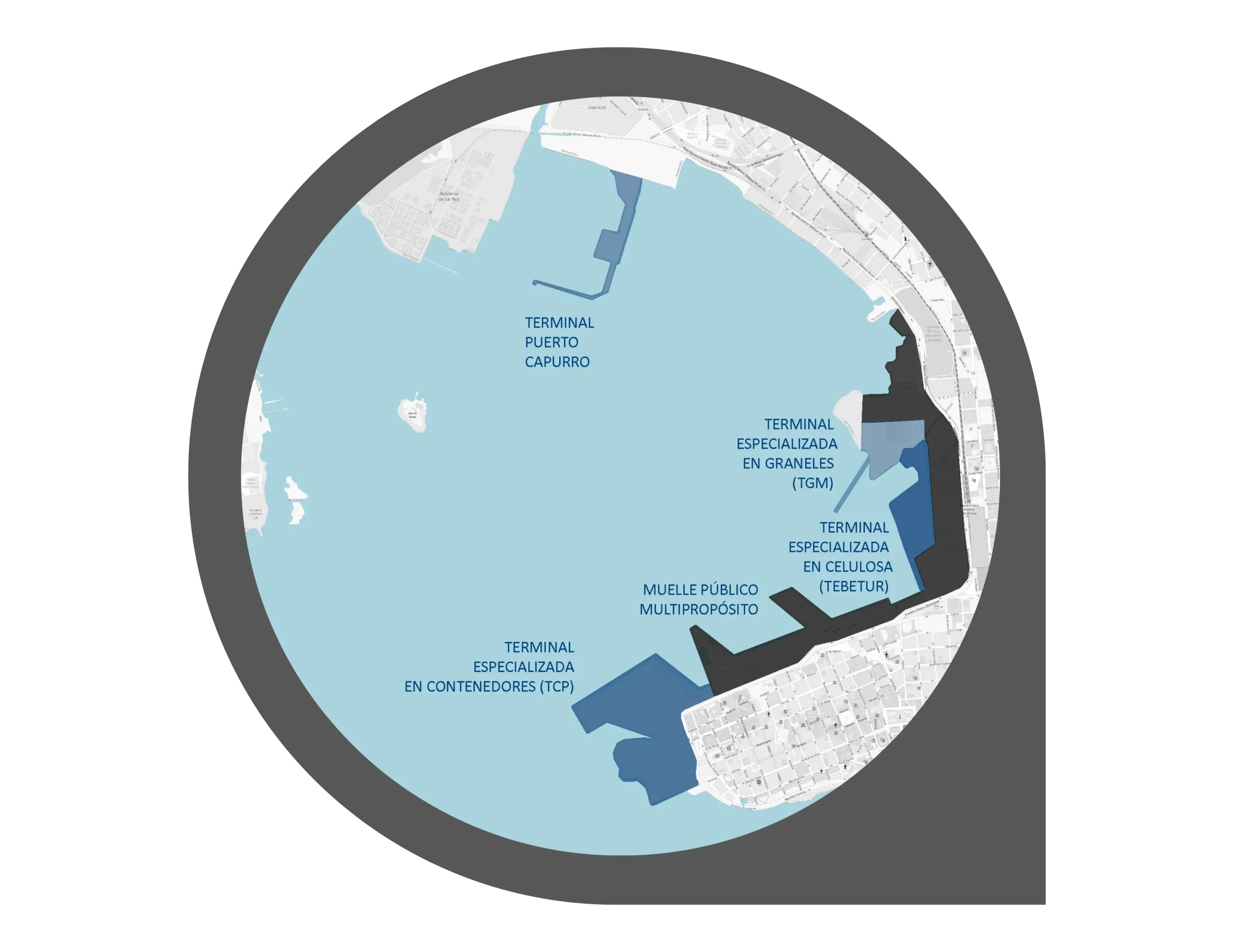Uruguay offers integrated and complementary logistics platforms to the region. Its geostrategic location positions it as the logistics hub of South America, reaching a market of more than 250 million inhabitants.

PORT CONNECTIVITY

* Routes connecting to the Port of Montevideo by sea for container transport, developed in conjunction with CENNAVE.
Uruguay has a direct connection (cargo reaches the destination port or from the port of origin without needing to change ships) with the Far East, Northern Europe, the Gulf of Mexico and the Atlantic coast of the United States and, also on a regional level, with Argentina and Brazil.
Uruguay is consolidating its position as the gateway to the region and a key departure point for merchandise arriving via the waterway and distributed to the rest of the world.
The main national ports can be divided into those that, under the free port regime, are managed by the National Port Administration (ANP) and those that are under the free zone regime.


Port of Montevideo
The Port of Montevideo is strategically located on the
shores of the Río de la Plata, inaugurated over 100 years ago.
It is a multipurpose port, its operations include containers,
bulk, fishing, cruises, passenger transport, automobiles and
general cargo. It has specialized terminals for
containers, bulk and pulp.
It is the main container port in the country, which has
15 regular container services, connecting by sea
with the region and with the rest of the world.
Nueva Palmira logistics node
It is the second Uruguayan port in terms of operational volume. It is
located at the kilometer zero of the Paraná – Paraguay waterway.
The logistics node is composed of the following ports:
+ The port administered by the ANP, which operates under the free port regime, moving mainly solid bulk.
+ The terminal of Corporación Navíos S.A., operating under the free trade zone regime, moving solid and liquid bulk.
+ The terminal of Ontur S.A., operating under the free trade zone regime, which is multipurpose, although its main product is pulp.

AIRPORT CONNECTIVITY *

* Direct air cargo connectivity from Carrasco International Airport.
Direct connections refer to routes where cargo can reach or depart from the airport without the need for a plane change.
Uruguay maintains direct connection with Europe —primarily Madrid, Amsterdam and Frankfurt—, with the United States via Miami, and with the main destinations in South America, consolidating its role as a regional air platform.
Uruguay has 8 airports, the main one being the Carrasco International Airport, the only airport in Latin America that operates under the Free Airport regime.
The port of entry and exit for 100% of Uruguay’s foreign air trade, allowing it to receive and send sea, air, and land cargo to any country in the region, strengthening the country’s position as a regional distribution center.


Pharma Hub
Uruguay has established itself as a logistics and innovation hub for the pharmaceutical industry.
Given its high international standards of operation and service, pharmaceutical companies choose Uruguay as their gateway to the region.
Some of the features of its infrastructure include state-of-the-art technology with real-time data recording, thermal classification using high-precision sensors, and a sustainable ventilation and cooling system.
TERRESTRIAL CONNECTIVITY
Land connectivity between Uruguay, Brazil, and Argentina is a fundamental aspect of its economic and social development. Thanks to a network of international corridors and strategic border crossings, the country is effectively integrated into regional trade.
One of the greatest advantages of land connectivity in Uruguay is the quality of its road infrastructure.
With over 8,700 kilometers of roads, the country has paved routes that allow for smooth circulation for both private vehicles and cargo transport. This is especially beneficial for the export industry, which depends on efficient logistics to move products to ports and borders, thus improving competitiveness in the international arena.


